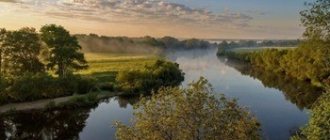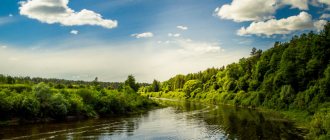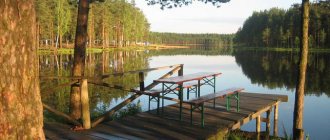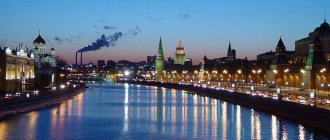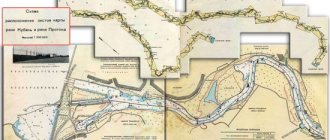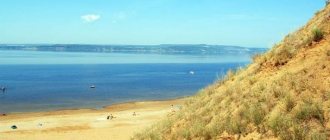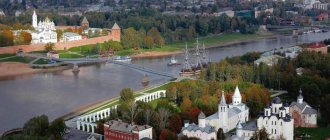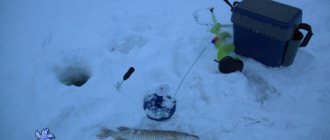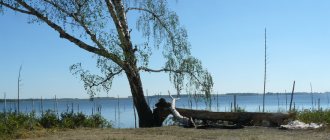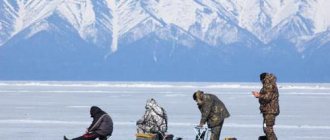Lakes of the Pskov region for recreation and fishing
Relaxing on the shores of the cleanest lake in the Pskov region is a simple matter.
The region is rich in reservoirs of various shapes and sizes. The most common thing in the region is wild recreation in the lap of pristine nature among picturesque forests and flowering meadows. Relaxing on the shore of the lake in tents, singing by the fire and the aroma of a pine forest - what could be more pleasant for tourists tired of the city noise. If wild holidays do not appeal to you, then you can consider staying at camp sites and country hotels in the coastal zone of some lakes. The largest lake in the Pskov region is Chudskoye, the deepest is Lake Glubokoye in the Opochetsky district. Lake Žižice is considered the most stocked with fish. In total, there are more than 3,700 lakes of varying sizes and depths in the region. The lake districts include Sebezhsky, Pustoshkinsky, Novosokolnichesky, Gdovsky and Velikoluksky.
Lake Peipus
The Pskov-Chudskaya lake complex includes three lakes in the Pskov region - Chudskoye, Pskovskoye, Teploe. Among them, Lake Peipus, known to all Russians, stands out in size (more than 2,600 sq. kilometers): it was here that the Battle of the Ice took place in 1242. The border with Estonia runs through the middle of the lake area. On the Russian coast, tourists will find dozens of recreation centers, campsites, and fisherman's houses.
How to get there by car
It is better to go to the north of the Pskov region through the capital of the region. The best road to Pskov is the international highway E95 (the internal index P-23 is also found on Russian maps) and comes from St. Petersburg. On a 294 km long route, motor tourists pass Gatchina, Luga, and Zapolye. Among travel expenses (on a route without overnight stays), the first place will be taken by fuel, which will cost 1100–1400 rubles. The road to the coast of Lake Peipsi along the A-180 highway, through Kingisepp, is shorter, but on local highways 41K-165, 41K-188, 58K-096 there are many sections with broken asphalt. Therefore, the route to Gdov (about 200 km) may take much longer than through Pskov.
Among the residents of Pskov, the lake is considered a “home” reservoir. You can get to Spitsino, Gdov, Domozhirka by car in one and a half to two hours. The path along highway 58K-096 with good asphalt passes through Ershovo, Seredka, Yamm. The road leads to the shores of Lake Peipus near the villages of Zalakhtove and Spitsyno and continues along the entire coast.
Things to do and see near the lake
Motor tourists come to Lake Peipsi for fishing and beach holidays. But in the surrounding area, curious vacationers will find many interesting places in the Pskov region that are worth visiting. Among them:
- walls of the Gdov fortress;
- Kyarovo estate, monument to General P. Konovnitsyn;
- cave altar (village Trutnevo);
- Korsakov estate (Verkholyan village);
- convent (village Elizarovo);
- an ancient chapel in the village of Yamm;
- churches, merchant houses, museums of Gdov.
THIS IS INTERESTING: If you are planning a vacation in the villages of Zagrivye, Troya, Khitovo, do not forget to issue a pass and take your passport with you. These coastal settlements are part of the border zone. A special pass will also be required when fishing from a boat in lake waters.
Review of lakes in the Pskov region
In our review, we have collected the most popular lakes among residents of the Pskov region and neighboring regions. Below we will tell you in more detail about the features of each reservoir.
Pskov Lake
Together with Lake Peipus, Pskovskoye is part of the Peipus-Pskov lake complex. The reservoirs are connected by the Warm Lake. The main part of Lake Pskov is located in Russia, and a small area on the northwestern side belongs to Estonia. Six rivers flow into the lake. The largest of them is the river. Great. The area of Pskov Lake is quite impressive in size, and its depth varies from 3 to 12 meters. Due to the shallow depth near the shore of the lake, it quickly warms up in warm weather.
Holidays on the shores of Lake Pskov are very popular among residents of the region. Well-maintained sandy beaches are mainly located near recreation centers, cottage villages and boarding houses. More secluded and uncrowded beaches can be found on one of the islands of Pskov Lake - Talab Islands, Stary Mtezh, Zalita, Kolpina. There are many places for wild recreation. In addition, Lake Pskov has great fishing opportunities. There is a wide variety of fish here, including pike, pike perch, smelt, whitefish, perch, roach, etc.
Among the recreation centers on the lake, we can highlight “Far Cordon”, “Lukomorye”, “Pleskov”, “Kalatskoye”, “Khutorok Sova”.
Lake Peipsi
Lake Peipsi is one of the largest in Europe. Its eastern part is part of Russia, and the northern and western parts belong to Estonia. The warm lake connects the reservoir with Lake Pskov, and together they make up the Peipus-Pskov lake complex. Lake Peipus has an impressive size and a relatively shallow depth - 7–17 m.
Tourism in these places is well developed - a variety of hiking routes in the surrounding area, horseback riding and boat rides, fishing, and beach holidays. For those who cannot go to foreign resorts or prefer domestic ones, Lake Peipsi will be an excellent option. Wide sandy beaches and endless expanses of lakes will create the impression of a holiday at sea. Popular places are the beaches near Spitsino, Ustya, and the Zalahtovya tourist center. In addition, the reservoir is rich in fish, so it is not surprising that fishermen from different regions come to Lake Peipsi.
In April, a reconstruction of the famous Battle of the Ice takes place on Lake Peipus. Through historical research, scientists determined the approximate location of the battle - approximately 400 m from Cape Sigovets.
Smolinskoe Lake
Holidays on Lake Smolinsk are popular among residents of the Palkinsky district. They arrive with tents and settle down for a couple of days, barbecue and fish. The depth of the lake is shallow, so it warms up well in the summer. The shores of Lake Smolinsk are mostly flat and swampy in places. The bottom is sandy near the coast, but closer to the center it is silt. Local residents swim, but it is unknown how suitable the water in the lake is for safe swimming. Quality checks took place several years ago and chemicals were found in the water.
Fishermen come to the lake for pike, perch, bream, bleak, roach and other fish. If you're lucky, you might even catch a crayfish. You can see wild ducks and swans on the lake. Local residents feed the birds, volunteers clean the banks of garbage left by careless tourists.
Lake Ale
On the Bezhanitskaya Upland, one of the most beautiful and deepest lakes in the Pskov region, Ale, overflowed. The lake is strewn with numerous islands, which give the reservoir a special picturesqueness. The special lake landscape is created by various capes, bays and bays. The pond is surrounded by forests and flower meadows. In some places, the approach to the water is made difficult by coastal vegetation - bushes and tall grass. In some places the banks are quite steep, and there are large stones near the water.
According to reviews from tourists, there are enough approaches to Lake Ale from the road. You can drive around the pond and look for the most convenient place for camping and swimming. Among the trees you can find small sandy areas near the water, without stones and with shallow depth. Near the shore, the sandy and muddy bottom is clearly visible.
Lake Ale is also loved by fishermen. You can fish from the shore or from a boat. There are crayfish, vendace, smelt, pike perch, rudd, crucian carp, pike, and bleak.
If spending time with savages doesn’t appeal to you, then you should rent one of the guest houses at the Khutora on Lake Ale recreation center.
Gorodishchenskoye Lake
Tourists who come to see the Izborsk fortress and Truvovo ancient settlement must go down to Lake Gorodishchenskoye. The reservoir is located just at the foot of the hill on which the fortress stands. From the steep slope, on the approach to the Truvovo settlement, a picturesque panorama of the lake opens. You can get to the Solovenisky Springs, which feed the lake, along a hiking trail.
The water in Lake Gorodishchenskoe is cool and clean. According to SanPin, you can swim in the lake, but the shores are mostly swampy, so there is little pleasure from water procedures. But you can feed the swans - birds are always happy with treats.
Lake Zizice
Lake Zhizhitskoe is a popular holiday destination for Pskov residents, Muscovites and tourists from other regions. It attracts not only with its beautiful nature and rich fishing, but also with the presence of interesting attractions in coastal settlements. Near the village of Zaluchye there is an ancient settlement, archaeological research of which is still ongoing. In the village Mussorgsky's estate has been preserved in Naumovo, where today a museum dedicated to the composer is organized.
In terms of area, the reservoir is second only to the lakes of the Chudsko-Pskov complex. A river flows out of the lake. Zhizhitsa flowing into the Western Dvina. The swampiness of the northern shore explains the lack of tourists who prefer to relax on the southern part of the lake with sandy beaches. Fishermen have chosen wild areas. Lake Zhizhitskoe is rightfully considered the most stocked reservoir in the Pskov region. Bream, gudgeon, burbot, tench and other types of fish are successfully caught.
Holidays around Lake Peipus - notes
Here in the commune they write a little more often than not constantly about all sorts of road trips - in the context of both roads and recreation.
Last weekend I took a ride around the reservoir indicated in the title and am sharing the information. Moreover, in Estonia the season officially began on Ivan Kupala Day, which is a public holiday; in our country, due to Independence Day from Estonia, Russia has actually already begun, but if you go by the actual weather, then, of course, you need to go closer to July. To put it very briefly, THERE is lack of spirituality, NATO, cleanliness and neatness, WE have great power, bonds, garbage and general disorganization. Well, also the primers in Estonia are excellent, we always have the opposite and there are no bathhouses in the campsites (few), unlike in Finland and here.
By the way, about primers. On a number of roads I saw this kind of primer (clickable):
It looks pretty cool - it doesn’t generate much dust, and the speed can be maintained at least 100+.
I traveled with a tent, preferring to stay in specially equipped places - campsites. The Estonian camping system as a whole was partially known to me from last year, when I traveled around the perimeter of this country. The situation here is an order of magnitude worse than in Finland and 3 orders of magnitude better than here. The main problem is that there is no single catalog (website) of all campsites - there are several sources on the Internet with varying degrees of relevance of information, but there are places that are not mentioned in any of them. Well, in general, the service is lower than Finnish.
The beach area of Lake Peipsi is located in the north, starting from the Narva River (almost before reaching Vasknarva) and to the Emajõe-Suursoo sookaitseala National Park. The main concentration is the town of Kauksi, which is reached by the main road from Narva - before Jõhva there is a left turn. By the way, before this kilometer there will be a turn to Toila where perhaps the best campsite in Estonia is located, located next to the spa hotel (and you can use all its restaurants and spas). But this is the Baltic coast, also good for a summer holiday, but that’s another story.
It must be said that in the coastal zone, where the beaches and the highway are relatively close (100-200 m), stopping cars (along the highway) and setting up tents is prohibited. There are specially designated places for this. Well, the parking lots are well marked and you can’t get through them, but the campsites are not always there. So there is a large parking lot and a beach right in front of Vasknarva, in the vicinity of Aliyõe, in Kuru and Kauksi. The beaches are sandy, good, central with infrastructure in the form of showers, cabins, etc. The most central beach (or one of?) of this place is where Coastal Highway 111 meets Highway 3 - there are also several tent sites nearby. Already in the semi-darkness I chose a not ideal place - “on the second line” i.e. behind the highway (from the shore). This is basically a camp with several comfortable houses, mini-houses “coffins”, a parking lot for campers and tent sites (furniture, a place for a fire), a children’s playground, a sports ground, a toilet (powder-closet, but with toilets) in a pine forest. The beach is a 2-3 minute walk across the road. From 2 people 10 euros.
It is also worth noting the town of Rannapungerja - there, in a bend of the river, there is a beautiful resting place, also a parking lot, a hotel, and boats.
Next is the town of Mustvi, one of the largest on the Peipsi coast - “the city of five churches”. Churches are churches, but I don’t remember exactly if there are beach campsites in the circle.
But around Kallaste - there is a second large city - both before the town and after. The town itself is also known for its red sandstone and in the center of the city there is a beach and recreation area near the red shore, but not with campsites. And between these towns I’ll note the village of Kasepaa, where right by the shore there is a very picturesque street scene with spectator seats in the form of an amphitheater. Very beautiful.
So we were looking for a campsite for the second night, and in Allastkivi where the famous castle with a park and further from it on the Nina coast were not found, we had to return to Kallaste - here a little before reaching (if you come from the south) we stopped at a campsite right on the coast. The campsite is somewhat strange: on one side there is a perfect lawn on the left with a whole field of solar panels, and on the right there are posts for campers, and right there is the beach. But, coming closer to the water, you can see that the sand is dirty, and the water is also in some thickets. And the place to eat is on the open veranda near a picturesque pond with a waterfall and a humpbacked bridge - but everything is also covered in mud. Maybe everything will be removed for the holiday? The toilet is like a water closet, but in my opinion there is no shower. There is Internet. 8 euros for two.
Fishing on the lakes of the Pskov region
The lakes of the Pskov region are rich in fish. The lakes of the Chudsko-Pskov complex are considered the most popular for both recreation and fishing. In summer and winter, numerous fishing enthusiasts settle down along the shores of Lake Peipsi, Pskov and Tyoploye. Experienced fishermen advise coming to the southern shore of Lake Peipsi from the villages of Starozhinets, Ostrovtsy, Raskopel or Podborovye. In July-August, perch, pike, pike perch and bream bite well. Fishing for pike perch is good on Lake Pskov near the Talab Islands, and eel fishing is good on Sebezh Lakes.
Fishing on lakes Velino and Dolgoe will not disappoint. You definitely won’t leave without a perch or pike. Reservoirs such as Lake Ivankovskoe, lakes Kudo, Yazno, and Khvoino are also famous for their good catch.
If you are interested in paid reservoirs, then pay attention to the Chistye Prudy recreation center. On the territory of the base there are several ponds stocked with trout, pike, carp and crucian carp. Fishing on the Trout Farm pond and on Lake Zhizhitsky promises to be productive, the most fishy places of which will be indicated by the instructors of the Volyn recreation center. Fishermen who come to the Verebkovo trout farm can boast of their trophy catch. The Kudykina Gora recreation center offers rental equipment for fishing on Lake Astso; you can also cast a fishing rod in a small pond next to the base.
Source
Zalita Island on Pskov Lake
Lake Pskov is rich in islands. Some of them are uninhabited, some are partially inhabited, for example, there may be tiny villages there. Among all the local island diversity, one can highlight the Talab Islands, located in the eastern part of Lake Pskov. In the north, the greatest interest is Stary Mtezh, a small island spit.
The island of Zalita (it is part of the Talab Islands) attracts special attention. You can easily walk around its territory in an hour. The island is famous for its ancient temple of St. Nicholas the Wonderworker. The exact date of its construction is unknown, but the first mention of the temple appeared in scribe books back in 1585. Fishermen living on the island converted an empty courtyard plot into a village church. But that's not all that attracts people here. For more than half a century (from 1958 to 2002), the island was the refuge of Archpriest Nikolai Guryanov. The great elder served in the local temple and for many years helped everyone who came here for spiritual advice. Many stories have been preserved about his special gift. He could use photographs to help find missing people, rescue them from captivity, heal seriously ill people, and warn about dangers and trials. The elder was buried right there in the island cemetery. Pilgrims still come here to visit his grave: to honor his memory and ask for advice.
Pskov Lake and Talab Islands (video)
Fishing, hunting, active recreation on the lakes of the Pskov region
Numerous lakes of the Pskov region occupy approximately 6% of its total area. In total, there are 3,700 lakes in which 42 species of fish can be found. Pskovsko-Chudskoye Lake is large and popular in the Pskov region. This is a very large reservoir, in size it is smaller than only several others in Europe - Onega, Ladoga. The lake is 50 km wide and about 150 km long. But it is shallow - 6-8, 3-4 meters in different parts. Therefore, it warms up well and creates a mass of plankton, which feeds a large number of commercial fish living here. In the north-west of the Russian Plain, Pskovsko-Chudskoye is considered the most “fishy” reservoir of this type.
The other largest lakes in the Pskov region are lakes Alyo and Polisto. Alyo is located on the Bezhanitskaya Upland, in the lake district, has winding, bizarre contours and 14 square meters. kilometers of mercy. And in the east of the region, in a much more inaccessible wetland, you can find another picturesque lake called Polisto. This is a shallow, 4-6 meters, vast reservoir with an area of 3,160 hectares. Here and in other lakes, fishing in the Pskov region allows you to catch Chud whitefish, grayling, pike perch, brook trout, asp, vendace, smelt and other fish.
Source
Pskov Lake in history
Ancient chronicles mention this territory as the area in which the Battle of the Ice took place. Here Alexander Nevsky defended his land from enemy attack. According to ancient records, the battle took place in early April 1242. The exact location of the event was mentioned here: “On Lake Peipsi, on Uzmen, at the Voronei stone.” This recording was made by one of the participants in the battle, that is, the information was received, one might say, first-hand. But what does it mean?
Source
Lakes of the Pskov region on the map
Lake Pskov is one of the components of the Chudsko-Pskov lake complex, which occupies its southern part. 95% of this lake is located in the Pskov region and only 5% belongs to the northwestern borders of Estonia. The pool area is just under 710 sq. km, the height above sea level is about 30 m, and the depth varies from 3 to 12 m.
The following rivers flow into Lake Pskov: Velikaya, Piusa, Lipenka and Obdekh. On the territory of the lake there are islands with a permanent population - Talabskie, Kolomtsy, Kolpina, Kamenka, Stary Mtezh.
Lake Pskov is characterized by low, swampy shores that are flooded during high water. Freeze-up begins here in November and lasts an average of 120 days. The western shore of the lake is a protected natural monument, as many rare birds live here. Thus, the birds of prey osprey and white-tailed eagle, which can be seen in local forests, are listed in the Red Book. This lake is considered the richest fish reservoir in the northwestern part of Russia. And this is not without reason, over 40 species of fish live here - roach, perch, whitefish, smelt, pike perch, bream and pike. We can safely say that Lake Pskov is incredibly popular among vacationers. There are a large number of tourist centers, sanatoriums and hotels located here.
Pskov Lake
Oleg Akuma" >
Pskov Lake is a pristine corner of nature, where people still come to swim and fish, look at the changing sunsets, landscapes and simple life of the Russian outback, and even make a small pilgrimage and join the holy places.
Formally, the lake is part of a large lake complex that unites lakes Peipus and Pskov together. Unlike Lake Peipus, the space of which Russia shares with Estonia approximately equally, Lake Pskov is almost entirely located on Russian territory.
The total area of the lake is 708 square kilometers. The lake is considered shallow - its usual depth near the shore is about 3 meters, mostly 6 meters, in rare places - up to 12. The shape of Lake Pskov is close to an oval: it is elongated from southeast to northwest. The banks are low, prone to swamping and flooding during spring floods. Thanks to these same features, the lake freezes quite quickly (usually by mid-November), and the bottom is covered with silt from time to time.
Pskov region - districts on the map
- Bezhanitsky district
- Velikoluksky district
- Gdovsky district
- Dedovichi district
- Dnovsky district
- Krasnogorodsky district
- Kunyinsky district
- Loknyansky district
- Nevelsky district
- Novorzhevsky district
- Novosokolniki district
- Opochetsky district
- Ostrovsky district
- Palkinsky district
- Pechora district
- Plyussky district
- Porkhovsky district
- Pskovsky district
- Pustoshkinsky district
- Pushkinogorsky district
- Pytalovsky district
- Sebezhsky district
- Strugo-Krasnensky district
- Usvyatsky district
| № | Locality | Subject of the federation | Coordinates | Stations |
| 1 | Velikie Luki | Pskov region | 56.3426, 30.5234 | 1 |
| 2 | Pskov | Pskov region | 57.8194, 28.3318 | 3 |
The Pskov region is located in western Russia. Historically, in ancient times, on the site of this small region there was a principality, which was owned by the Moscow princes. To find out about the location of settlements, use the satellite map of the Pskov region. It allows you to view in detail streets and houses, rivers and forests, as well as any objects in the region.
The region is located on the border with 3 foreign countries:
- Latvia;
- Belarus;
- Estonia.
In the north, the borders of the region are limited by the Leningrad region, and in the east by Novgorod and Tver regions. All border settlements can be found on the map of the Pskov region by district. It is convenient to travel using the online service. You can quickly locate cities, find roads and railway stations.
In the region on the border with Estonia there is one of the largest lakes in Europe - Pskovsko-Chudskoye. There are practically no large rivers in the region. The most significant - Velikaya, as the map of the Pskov region with diagrams shows, is located in the western part. The main rivers of the region also include:
- Lovat;
- Plussa;
- Cherekha;
- Shelon;
- Issa.
The Velikaya, Zhelcha and Chernaya rivers are navigable. There is a fishing fleet in the region. The reservoirs of the region are famous for their habitat of delicious smelt fish.
Districts on the map of the Pskov region
Looking at the areas on the map of the Pskov region, you will notice that the north of the region is dense forests. And in the central and southern parts there are a large number of lakes. There are many small settlements in the region that are abandoned by residents and completely abandoned. In total, about 1 million people live in the region, but the population decreases every year.
The region has a well-developed transport infrastructure. You can come to the region from Moscow along the M-9 federal highway, and from St. Petersburg - along the M-20 highway. All travel routes are displayed on a detailed road map of the Pskov region. Asphalt highways connect the capital of the region, Pskov, with cities such as:
- Riga;
- Velikie Luki;
- Vitebsk;
- Rzhev;
- Talin;
- Smolensk
If you are traveling around the region or crossing it to get to other regions, use a map of the Pskov region with settlements, which will become an indispensable assistant on the way.
The region is divided into 24 districts with independent administrative centers. The most densely populated areas are Velikoluksky and Ostrovsky districts. And the least number of people live in the Krasnogorodsky district, which, as a detailed map of the Pskov region shows, is located in the southwest of the region.
Where the fish bite: The best places for fishing in the Pskov region in July - August
There are about 4,000 large and small rivers and lakes in the Pskov region - a real paradise for amateur fishermen, but, of course, you don’t want to go at random. So where can you go in July - August to relax and fish? For Fisherman's Day (July 14), the Pskov Information Agency compiled the top 5 best, in the opinion of experienced fisherman and traveler Nikolai Besklevny, places for fishing.
On June 15, the long-awaited motorboat season opened, and from July 1, motorized sailing on Tyoploe Lake (in water areas belonging to the Remdovsky reserve) is allowed. Choose options for fishing - I don’t want to. Now let's talk about everything in order.
The southern part of Lake Peipus is Storozhinets, Raskopel, Ostrovtsy, Podlipye, Podborovye. To get to these places from Pskov, you have to cover about 80-120 km, but it’s worth it. The best perch fishing begins here in July. This kind of fishing attracts both because of the beautiful open spaces and the size of the fish - specimens up to one kilogram can be found. Perch likes to stay on rocky places and “banks” (elevations of the bottom topography), of which there are many throughout the lake. They catch it by trolling with wobblers, casting with various baits, or using a jig. There is a high probability of taking away trophies from these places in the form of large pike, bream or even pike perch (if you are very lucky). If you have a boat with a motor, you definitely won’t be left without fish.
Map of the Pskov region with cities and villages
The capital of the region, Pskov, has the title of “city of military glory.” More than 200 thousand people live here, and the main industrial enterprises and main attractions are located here. The hallmark of the settlement is the Pskov Kremlin, the location of which is shown on a map of the Pskov region with cities and villages. Also, tourists coming to the region tend to visit ancient fortresses in the cities:
- Izborsk;
- Porkhov;
- Gdov.
The Pskov land is famous for its large number of monasteries and shrines, to which several tens of thousands of pilgrims flock every year. By zooming in on the map of the Pskov region with villages, you will find the location:
- Pskov-Pechora Monastery;
- Convent of the Nativity of the Blessed Virgin Mary of Snetogorsk;
- Spaso-Preobrazhensky Cathedral;
- Nikandrova desert.
Ethnic tourism is developed in the region. You can visit the ethnographic museum of the Seto people, which is located in the village of Sigovo, or get acquainted with the history and small inhabitants in settlements near Izborsk.
There are a large number of recreation centers in the region, which are located on the banks of rivers. Local reservoirs are distinguished by a variety of valuable fish species. Here you can catch pike, catfish or bream. Fishermen come to these places both in summer and winter.
Economy and industry of the Pskov region
The most important part of the region's economy is agriculture. There are more than 500 farms and subsidiary farms in the region that produce dairy and meat products, grow potatoes and other vegetables.
Light and food industry enterprises operate in the cities. Large factories include the Locomotive Repair Plant and the Electrical Fittings Plant, which can be found on Yandex maps of the Pskov region in the main city of the region and in Velikiye Luki.
The region's enterprises also produce flour, fabrics, glass products, porcelain, and building materials. The region has a well-developed tourism infrastructure. Numerous recreation centers and hotels welcome guests to the region, as well as restaurants and cafes.
Source
